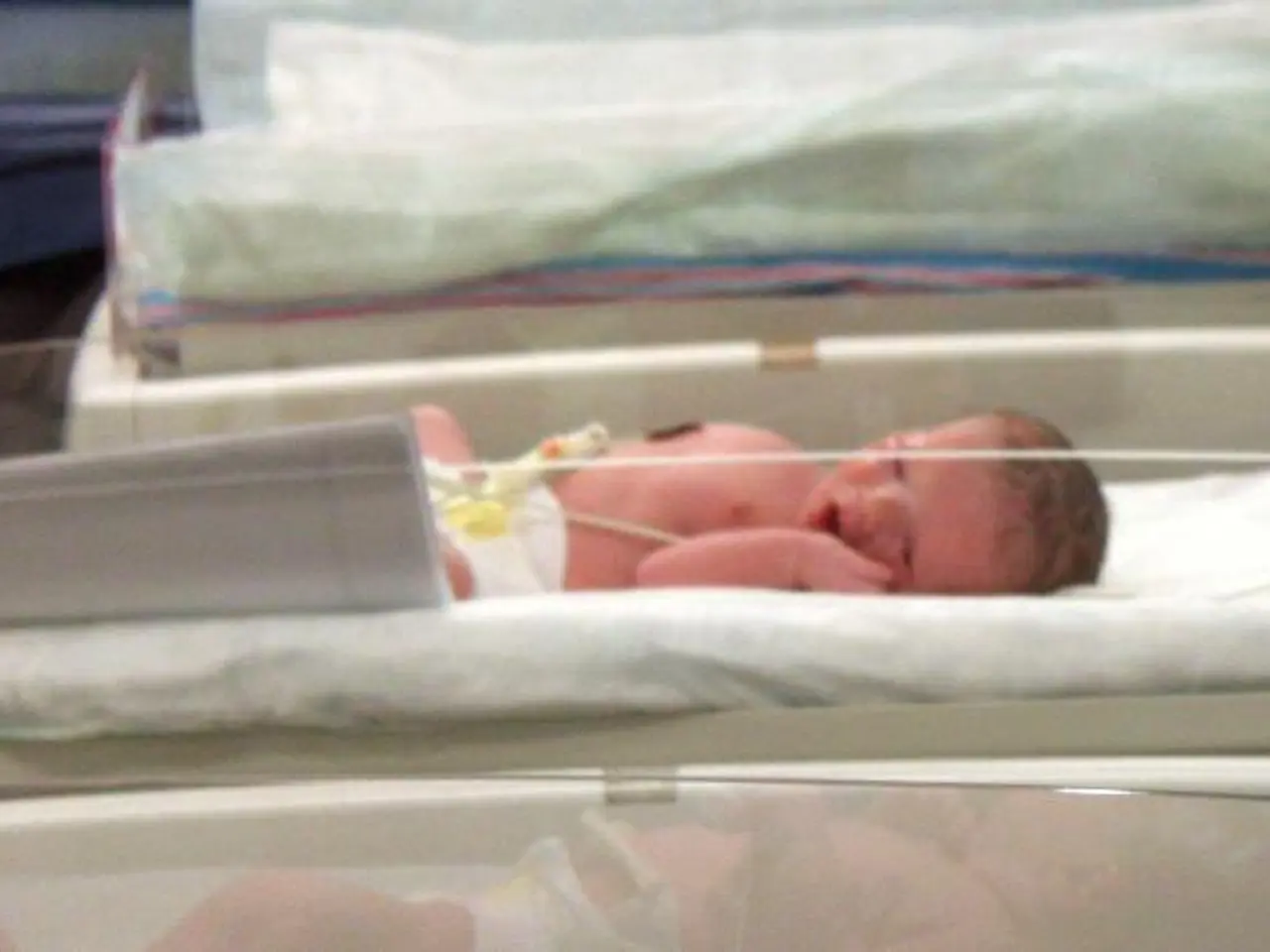Genetic Research Yields Connections Between Preeclampsia and Babies' Genetic Makeup
In a groundbreaking international genetic study, researchers have discovered that a potentially dangerous condition known as preeclampsia, which can occur during pregnancy, is linked to a baby's DNA. This groundbreaking finding was published in the journal Nature Genetics.
Led by first author Dr. Linda Morgan of the University of Nottingham in the U.K., the team analyzed DNA samples from over 4,000 children born to mothers who developed preeclampsia and over 300,000 whose mothers did not. This extensive investigation, which spanned 5 years, was carried out in Iceland, Norway, Finland, and the U.K.
Preeclampsia presents as a sudden increase in a pregnant woman's blood pressure during the 20th week, accompanied by increased protein in her urine and swollen hands and face. If left untreated, it can lead to severe health complications for both the woman and her baby. The condition affects around 5 percent of pregnancies and is a leading cause of pregnancy- and birth-related deaths.
In the past, studying preeclampsia has been challenging due to its onset during the formation of the placenta. However, this genome-wide association study (GWAS) allowed the researchers to look for clues in the mother's, father's, and their baby's DNA. While previous GWAS analyses of preeclampsia have been done, they only focused on the DNA of the mothers.
The GWAS analysis carried out at the Wellcome Trust Sanger Institute in Cambridge, U.K., and deCODE Genetics in Reykjavik, Iceland, identified two previously unknown DNA variants that were significantly linked to preeclampsia. These variants are close to a gene called FLT1 that codes for a cell-surface receptor known to be involved in the creation of new blood vessels. One form of FLT1 has been linked to the development of preeclampsia before. If placental levels of the associated protein become too high, they enter the pregnant woman's bloodstream and can damage her blood vessels, resulting in high blood pressure and damage to her liver, kidneys, and brain.
Dr. Morgan and her team believe their study is the first genetic study of preeclampsia to focus on the DNA of the offspring. They are now analyzing the genomes of another 4,220 babies in Kazakhstan and Uzbekistan to find out if these same DNA variants are present. If confirmed, these findings could pave the way for more effective prevention and treatment of preeclampsia in the future, improving the outcome of pregnancy for both mother and child.
Recent genetic studies on preeclampsia have also identified genes like STOX1 and APOL1 that contribute to the development of the condition by affecting placental development and function, as well as angiogenic processes. These genetic factors, combined with environmental and clinical risk factors, play a crucial role in causing preeclampsia. Understanding these interactions could help improve the diagnosis and management of this potentially life-threatening condition.
- This groundbreaking discovery in motherhood could revolutionize the understanding and treatment of preeclampsia.
- Pfizer, a key player in the pharmaceutical industry, might invest in therapies and treatments for preeclampsia based on these new findings.
- The workplace-wellness sector could integrate chronic-disease management programs, including those focused on preeclampsia, to support employees with medical-conditions like this.
- As preeclampsia is a risk factor for developing cardiovascular-health issues later in life, this research could shed light on the long-term health consequences for both mothers and children.
- The American Cancer Society could focus on the potential link between preeclampsia and the development of respiratory-conditions or digestive-health problems.
- Eye-health professionals should consider the impact of hypertension caused by preeclampsia on the eyes, which could eventually lead to vision problems.
- During parenting classes, mentioning the association between preeclampsia and hearing impairment could educate new parents on potential risks.
- Hearing aids manufacturers could collaborate with healthcare providers to create tailored solutions for mothers and babies affected by preeclamsia-induced hearing issues.
- In the realm of health-and-wellness, promoting fitness-and-exercise as a means to manage hypertension and maintain a healthy pregnancy is crucial.
- Sexual-health clinics may need to address any sensitivities related to preeclampsia and safer sexual practices during pregnancy.
- For those suffering from autoimmune-disorders, understanding how these conditions interact with preeclampsia could help develop targeted treatments in the future.
- Considering the impact of climate-change on public health, analyzing regions with high levels of carbon emissions and their correlation to preeclampsia cases could be beneficial.
- The manufacturing sector could implement stricter safety measures to protect pregnant workers and minimize exposure to hazardous substances that might trigger preeclampsia.
- With mental-health issues being an increased concern during pregnancy, it's essential to integrate mental-health support systems within prenatal care for at-risk mothers.
- Men's-health specialists should encourage men to take an active role in supporting their partners through pregnancy by being aware of the signs and risks of preeclampsia.
- To maintain healthy skin during pregnancy, it's vital to prioritize skin-care routines that do not aggravate preeclampsia symptoms.
- In the field of environmental-science, further exploring the pollutants that may contribute to the development of preeclampsia could help in its prevention.
- Financial institutions like banks and insurance companies might develop specific policies for Medicare to cover additional preeclampsia-related costs.
- CBD, a popular supplement, may offer potential benefits in managing some preeclampsia symptoms, but further research is necessary.
- With neurological-disorders like epilepsy being associated with preeclampsia, healthcare providers should maintain vigilance to ensure appropriate treatments are considered for affected pregnancies.
- In the realm of energy, encouraging cleaner air and water conservation could indirectly support better pregnancy outcomes by reducing environmental factors contributing to preeclampsia.
- Retail establishments can contribute by stocking pregnancy-friendly products, such as blood-pressure monitors and nutrient-rich foods, to support healthy pregnancies.
- Entrepreneurs might seize the opportunity to develop innovative solutions tailored to managing preeclampsia in both urban and rural settings.
- Transportation systems should consider accommodating pregnant individuals by offering priority seating or dedicated transport options to minimize complications.
- In the sphere of leadership, fostering a more diverse and inclusive workplace culture could contribute to a better understanding of various health concerns, such as preeclampsia.
- Small-business owners could partner with nutritionists to develop healthy meal plans specifically designed for at-risk pregnant women.
- Weight-management programs targeting expectant mothers could help reduce the incidence of preeclampsia and improve their overall health.
- As preeclampsia affects both women and men, raising awareness about the condition in mens-health campaigns could encourage shared responsibility in preventing its complications.
- Skin-care advocates should promote regular self-examinations to educate pregnant individuals on detecting early signs of skin-conditions related to preeclampsia.






